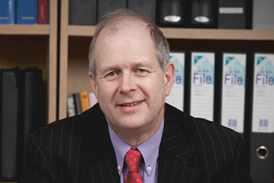During many years of acting for children in child protection cases my practice has regularly included cases involving trafficked and unaccompanied children.

I am a member of a working group – Equal Justice for Migrant Children (EJMC)– the objective of which is to establish a unified court which would span the three jurisdictions and systems of law that these children encounter on arriving in this country or when they come to the notice of the authorities.
The unified court would be a ‘one stop’ court for migrant children covering immigration, crime and local authority care.
Despite guidance, caselaw and decision making, the current system is not working for these children. The three areas of law each have different overarching duties towards the children and it is only in the family court that all decision-making must place the child’s best interests as paramount.
Our current system is fragmented and certainly far from joined up. These most vulnerable of children are dealt with by many judges, advocates, social workers and courts, mostly making decisions without having possession of all relevant information and with limited understanding of how the different areas of law interface with each other and impact on the children’s lives.
A one stop court for migrant children would avoid the children having to tell their story repeatedly to the different professionals they encounter. These children are likely to have been traumatised and have mental health issues as a result of their dangerous and frightening journeys before they reach this country.
Many of the children have been threatened by their traffickers as to what will happen to them if they do not stick to the stories the traffickers advise them to relate, the only purpose being to protect the traffickers.
These accounts are often unbelievable and inconsistent but form the basis, from the start, of the immigration authorities to regard the child of having lied and who cannot be believed, resulting in punitive, flawed and inhumane decision making.
EJMC proposes that the remit of the unified court would include:
- All immigration matters involving the asylum applications, extensions of leave to remain, and appeals to immigration tribunals.
- Challenges to age assessment decisions.
- Family court proceedings such as care, guardianship and adoption.
Currently there is no consistency as to whether a local authority will assume parental responsibility for these children and so take the place of parents in caring for and protecting them. Local authorities can either take the children into care under Section 20 of the Children Act 1989 but this means that there is still nobody in this country with parental responsibility for them. Alternatively they can issue care proceedings which immediately gives the local authority parental responsibility for the child and statutory duties to ensure that their best interests prevail both while they are under 18 and then as care leavers. Sadly there is a postcode lottery as to how individual local authorities engage with migrant children and many take no responsibility for them and they are placed in hotels or unregulated foster homes. Many end up living on the streets at risk of being re-trafficked.
- Criminal proceedings, currently in the youth courts or the Crown courts, as these unprotected and vulnerable children get drawn into criminal activities, such as working in cannabis farms, nail bars or county lines. In the new integrated court forum criminal law would treat these children as victims rather than offenders as is often the case now.
- Appeals to other tribunals in relation to issues such as special education, disability and mental health.
- Applications under the National Referral Mechanism (NRM), where decisions are made as to whether a child has been trafficked.
There would be legal aid for all cases within the new unified court system, currently available in only limited types of proceedings, and children would be represented by specialised and accredited lawyers.
It would be a holistic and problem-solving court, backed by a range of professionals specialising in all aspects of these children’s lives.
Overall and very importantly, in convincing the various government departments and legislators of the advantages of the unified court, it would be cost-effective and avoid the current duplication at the heart of the current system, with so many different bodies, courts and government departments dealing with different aspects of the child’s life.
The Family Drug and Alcohol Court (FDAC) serves as a model for the proposed, unified court. FDAC deals with care proceedings within the family court system, where parents have drug or alcohol problems, such that they are considered unable to safely parent their children.
In the FDAC model, there is just one judge dealing with the case throughout. The children can form a relationship with their judge, and with the other professionals who are part of the court structure.
The working group believes the FDAC model would be the blue print for a new unified court and, as research into FDAC has shown, a new unified court would result in considerable financial savings for all the different government departments currently dealing with migrant children.
The UK has ratified the 1989 United Nations Convention on the Rights of the Child. Article 3 of the Convention makes it a binding obligation of international law that all actions concerning children, including those taken by authorities, courts, administrative and legislative bodies, should put the best interests of the child as paramount and embedded in the system.
Our current system forgets that, above all else, these young people are 'children'. Our law, courts and decision makers have a duty to assist, support and protect them in a humane and just way. The hope is that a new unified court will go some way to ensure this.
Naomi Angell is a consultant at Osbornes Law and heads its adoption, surrogacy and fertility law unit































No comments yet